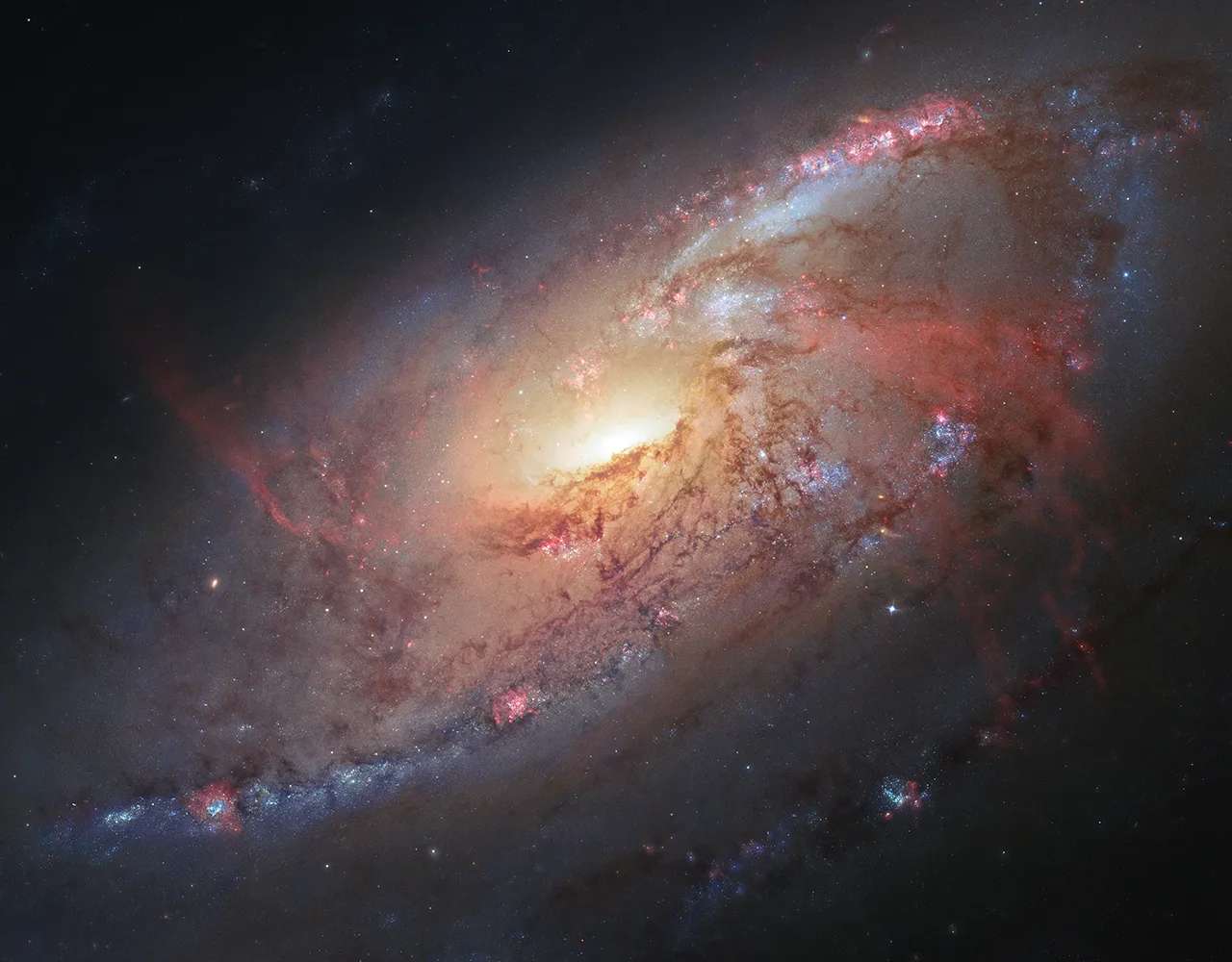M106 | NGC 4258 | Spiral Galaxy | Canes Venatici | 22,000,000 Light Years Away
Messier 106, also known as NGC 4258, is a barred spiral galaxy located in the constellation Canes Venatici. Discovered by Pierre Méchain in 1781 and later added to Charles Messier’s catalog, it is situated approximately 23.5 million light-years away from Earth. One of the notable features of Messier 106 is its active galactic nucleus, believed to host a supermassive black hole that emits powerful radio waves and X-rays.
The spiral arms of Messier 106 are prominent, displaying intricate details and regions of star formation. The galaxy’s barred structure, marked by a central bar-like feature, contributes to its classification as a barred spiral. Observations of Messier 106 provide astronomers with valuable data on the dynamics of barred spiral galaxies, the distribution of molecular gas, and the mechanisms influencing star formation within these cosmic structures.
Messier 106 is part of the M106 Group, a collection of galaxies that includes several interacting and gravitationally bound companions. The study of this galaxy and its group members offers insights into the complex interactions and environmental factors that shape galaxies within such cosmic communities. Messier 106’s position in the Canes Venatici constellation makes it an interesting target for both amateur and professional astronomers interested in exploring the intricacies of barred spiral galaxies and their role in the broader context of galactic evolution.

